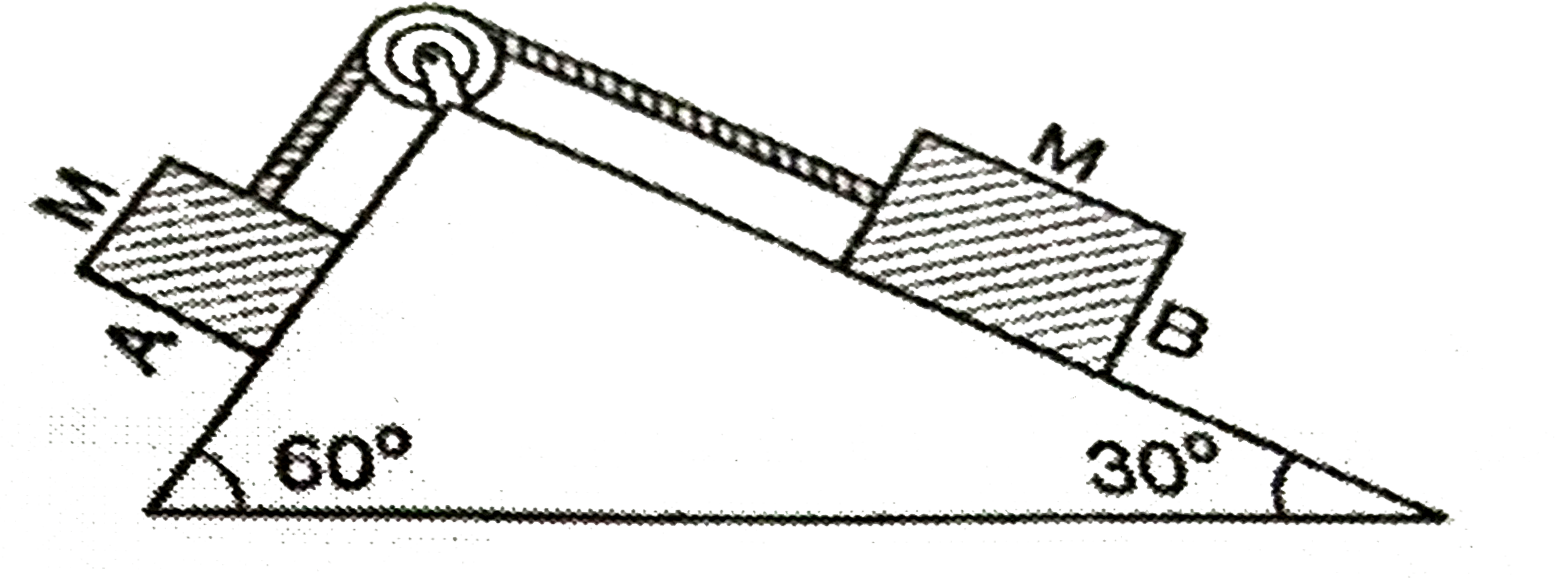A wire of 9.8×10−3kgm passes over a frictionless light pulley fixed on the top of a frictionless inclined plane which makes an angle of 30∘ with the horizontal. Masses m and M are tied at the two ends of wire such that m rests on the plane and M hangs freely vertically downwards. the entire system is in equilibrium and a transverse wave propagates along the wire with a velocities of 100m/s.
m=20 kg
m=5 kg
m=2 kg
m=7 kg
The correct Answer is:A
Step by step video & image solution for A wire of 9.8xx10^(-3) kg/m passes over a frictionless light pulley fixed on the top of a frictionless inclined plane which makes an angle of 30^(@) with the horizontal. Masses m and M are tied at the two ends of wire such that m rests on the plane and M hangs freely vertically downwards. the entire system is in equilibrium and a transverse wave propagates along the wire with a velocities of 100 m//s. by Physics experts to help you in doubts & scoring excellent marks in Class 12 exams.
Updated on:21/07/2023Topper's Solved these Questions
- WAVESBook:AAKASH SERIESChapter:WAVESExercise:EXERCISE-II (Strings (Speed of a travelling wave:))
Explore 23 Videos
- WAVESBook:AAKASH SERIESChapter:WAVESExercise:EXERCISE-II (Velocity of Sound:)
Explore 8 Videos
- WAVESBook:AAKASH SERIESChapter:WAVESExercise:EXERCISE-IB (Assertion (A) & Reason (R) Type Questions)
Explore 72 Videos
- WAVE OPTICSBook:AAKASH SERIESChapter:WAVE OPTICSExercise:PROBLEMS (LEVEL - II)
Explore 33 Videos
- WAVES OPTICSBook:AAKASH SERIESChapter:WAVES OPTICSExercise:EXERCISE -III (POLARISITION)
Explore 10 Videos
Similar Questions
A wire of 9.8×10−3kg per meter mass passes over a fricationless pulley fixed on the top of an inclined frictionless plane which makes an angle of 30∘ with the horizontal. Masses M1 & M2 are tied at the two ends of the wire. The mass M1 rests on the plane and the mass M2 hangs freely vertically downwards. the whole system is in equilibrium. Now a transverse wave propagates along the wire with a velocity of 100m/sec. Find the ratio of masses M 1 to M 2 .
View SolutionA person pushes a block of mass 4 kg up a frictionless inclined plane 10 m long and that makes an angle of 30∘ with the horizontal . Then the work done is
View Solution
Knowledge Check
Two blocks each of mass M are resting on a frictionless inclined plane as shown in fig then:
 AThe block A moves down the planeBThe block B moves down the plane.CBoth the blocks remain at restDBoth the blocks move down the plane.
AThe block A moves down the planeBThe block B moves down the plane.CBoth the blocks remain at restDBoth the blocks move down the plane.A uniform wire of length 20 m and weighing 5 kg hangs vertically. If g=10ms−2, then the speed of transverse waves in the middle of the wire is
A10ms−1B10√2ms−1C4ms−1D2ms−1A block mass 3 kg slides down a frictionless inclined plane of length 6 m and height 4 m. if the block is released from rest at the top of the incline, what is its speed at the bottom?
A5m/sB6m/sC8m/sD9m/s
The tops of two poles of height 40 m and 25 m are connected by a wire. If the wire makes an angle 30∘ with the horizontal, then the length of the wire is
View SolutionAn ideal massless spring S can compressed 1.0 m in equilibrium by a force of 1000N. This same spring is placed at the bottom of a friction less inclined plane which makes an angle θ=30∘ with the horizontal. A 10kg mass m is released from the rest at top of the inclined plane and is brought to rest momentarily after compressing the spring by 2.0m. the distance through which the mass moved before coming to rest is.
View SolutionTwo bodies of masses 4 kg and 6 kg are tied to the ends of a massless string. The string passes over a frictionless pulley. The acceleration of the system is :
View SolutionThe tops of two poles of height 20 m and 14 m are connected by a wire. If the wire makes an angle of 30∘ with horizontal, then the length of the wire is
(a) 12 m
(b) 10 m
(c) 8 m
(d) 6 m
View SolutionThe work done in pushing a block of mass 10 kg from bottom to the top of a frictionless inclined plane 5 m long and 3 m high is-
(g=9.8m/sec2)
View Solution